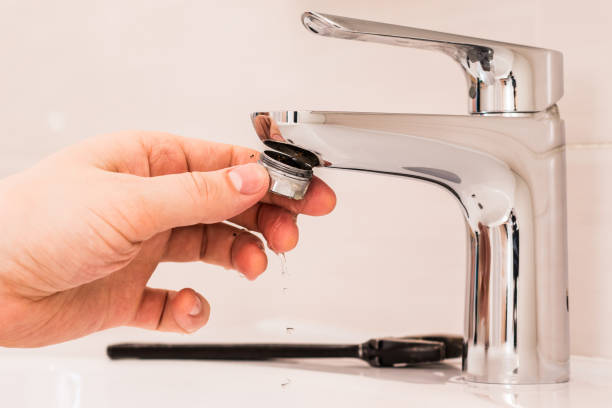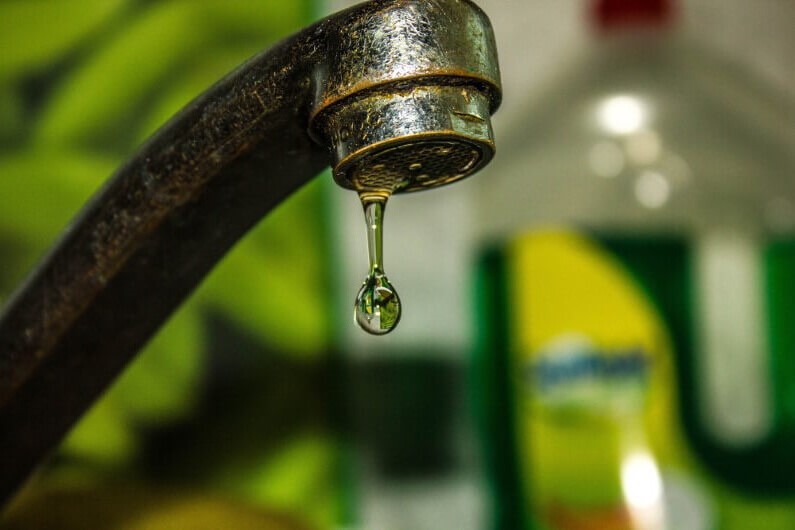What It's Vital to Fix a Broken Faucet
What It's Vital to Fix a Broken Faucet
Blog Article
The content down below in relation to 4 Common Reasons for a Leaky Faucet is especially remarkable. Give it a go and draw your own personal assumptions.

Trickling faucets could look like a minor inconvenience, however their effect surpasses just the annoyance of the sound. From drainage to incurring unnecessary financial expenses and health dangers, disregarding a dripping tap can bring about various consequences. In this post, we'll look into why it's important to resolve this usual household concern without delay and efficiently.
Wastefulness of Water
Ecological Impact
Leaking faucets add substantially to water wastage. According to the Environmental Protection Agency (EPA), a solitary faucet leaking at one drip per secondly can waste more than 3,000 gallons of water annually. This not just pressures water resources however also affects ecological communities and wild animals dependent on them.
Step-by-Step Guide to Repairing a Dripping Faucet
Tools Needed
Prior to trying to take care of a leaking tap, gather the required devices, consisting of a flexible wrench, screwdrivers, replacement parts (such as washers or cartridges), and plumber's tape.
Common Tap Issues and Their Solutions
Recognize the kind of faucet and the specific concern triggering the drip. Typical problems include damaged washing machines, corroded valve seats, or damaged O-rings. Describe producer guidelines or on the internet tutorials for step-by-step advice on repair services.
Financial Costs
Boosted Water Bills
Past the ecological impact, leaking taps can inflate water costs substantially. The gathered waste in time converts into greater energy expenditures, which might have been stayed clear of with prompt repairs.
Prospective Home Damage
In addition, extended trickling can result in damage to fixtures and surface areas surrounding the tap. Water build-up can cause staining, rust, and also architectural problems if left ignored, resulting in additional repair work costs.
Wellness Issues
Mold And Mildew and Mildew Development
The constant presence of dampness from a dripping tap produces a perfect atmosphere for mold and mildew and mildew growth. These fungis not only compromise interior air quality however additionally position health and wellness threats, specifically for individuals with respiratory system problems or allergic reactions.
Waterborne Illness
Stationary water in trickling taps can become a breeding ground for germs and other microorganisms, enhancing the danger of waterborne diseases. Impurities such as Legionella germs grow in stagnant water, potentially leading to major illnesses when consumed or breathed in.
DIY vs. Specialist Fixing
Benefits and drawbacks of DIY Repair Service
While some may try to deal with a dripping tap themselves, do it yourself repairs include their very own set of obstacles. Without proper expertise and tools, do it yourself attempts can intensify the concern or result in insufficient repair work, lengthening the trouble.
Benefits of Hiring a Specialist Plumber
Employing a professional plumber makes certain that the underlying root cause of the dripping faucet is resolved successfully. Plumbings possess the know-how and equipment to identify and fix faucet concerns effectively, conserving time and decreasing the threat of more damage.
Environmental Duty
Private Contribution to Preservation
Taking obligation for dealing with dripping taps straightens with wider initiatives toward water preservation and environmental sustainability. Every person's actions collectively make a considerable influence on protecting precious resources.
Lasting Living Practices
By focusing on prompt repair work and taking on water-saving habits, individuals add to lasting living methods that profit both present and future generations.
Safety nets
Regular Upkeep Tips
To stop trickling faucets, do regular maintenance such as cleansing aerators, checking for leaks, and replacing worn-out parts without delay. In addition, take into consideration installing water-saving gadgets or upgrading to more effective fixtures.
Significance of Prompt Repairs
Resolving trickling faucets as soon as they're seen protects against additional water wastefulness and possible damage, eventually conserving both water and money in the future.
Effect On Building Worth
Perception of Well-Maintained Property
Preserving a residential property in good condition, including attending to upkeep problems like dripping taps, enhances its viewed value and worth among possible customers or tenants.
Impact on Resale Worth
Residences with well-kept plumbing components, including taps, command greater resale worths in the realty market. Resolving trickling taps can add to a favorable perception throughout residential or commercial property inspections and settlements.
Final thought
Dealing with a dripping faucet goes beyond simple convenience; it's an essential action toward saving water, decreasing economic costs, and guarding health and wellness and home. Whether via DIY fixings or expert assistance, acting to take care of trickling faucets is a small yet impactful method to promote liable stewardship of sources and contribute to a much healthier, more sustainable future.
How to Fix a Leaky Faucet: Step-by-Step Repair Guide
A leaky faucet may seem like a simple annoyance, but if it's not fixed promptly, that leak could cost hundreds to potentially thousands. From water damage to mold, mildew, and high water bills, even a tiny leak can be catastrophic if left unattended. Damage like this can even affect the overall value of your home, so it's important to take the right approach for leaky faucet repair. You may need the help of a plumber in some cases, but we've got a few tips you can try on how to fix a leaky faucet before calling the pros.
Four Faucet Types
When you're learning how to fix a leaky faucet, the first step is knowing what kind of faucet you're working with! There are four common types.
Cartridge Faucets
Cartridge faucets come in one- or two-handled varieties. In one-handled cartridge faucets, hot and cold water combines in a single cartridge. In the two-handled versions, hot and cold water are controlled separately and mixed in the faucet.
Ball Faucets
Ball faucets have a single lever you push up and down to adjust the pressure and rotate to change the temperature. A slotted metal ball controls the amount of water allowed into the spout.
Compression Washer Faucets
They're the oldest type of faucet, but they're still used in many homes — especially older ones. Compression faucets have two separate handles that, when turned, raise or lower the washer that seals a water valve. This valve stops water from flowing through the faucet when it is turned off.
Disc Faucets
Disc faucets rarely need to be repaired due to their maintenance-free design. The water flow is controlled by two discs — the upper one raises and lowers against a fixed lower disc, creating a watertight seal. If your disc faucet starts leaking, you may need to replace the seals or clean residue buildup from the inlets.
Fixing a Leaky Faucet
Step 1: Turn Off the Water
Whether you're learning how to fix a leaky bathtub faucet or how to fix a leaky kitchen faucet, always turn off the water supply to your working area when you're fixing a leak. The last thing you want is a flood added to your list of things to fix.
Look for the shutoff valves below your sink or around the tub and turn them clockwise to stop the water flow. If your faucet doesn't have shutoff valves, you may need to turn off the water for the whole house. Check to make sure it's off by turning the faucet on. If nothing comes out, you're ready to start the repair.
Step 2: Take Apart the Faucet
How you disassemble your faucet depends on the type of fixture you have. You can use a flathead screwdriver to remove the caps on top of the handle or handles for cartridge and compression faucets. Inside, you should see handle screws. Unscrew these with a screwdriver to remove the handle.
Disc- and ball-style faucets will typically have an inlet screw near the handle, and removing that will reveal the interior of the faucet.
Detach the Valve Stem
For cartridge- and compression-style faucets, you'll see the inner valve stem or cartridge once you remove the faucet handles. If you have a compression faucet, unscrew the brass valve stem. If you have a cartridge faucet, pull out the cartridge. If your cartridge has been in place for a while, it may require some tools or extra force to remove it due to mineral deposits.
Examine and Replace Parts
Once you've removed the parts, check them out to confirm what needs to be replaced. You may see corroded rubber washers, O-rings, stems, or cartridges. On a ball-style faucet, check the seats and springs for damage.
If you need to repair a leaky disc faucet, check the inlet and seals on the lower disc.
Once you determine what parts must be replaced, visit your local hardware store. Bring the damaged parts with you to ensure you can purchase the correct components to replace them.
Clean Valves and Faucet Cavity
If you've removed a stem or cartridge, you may notice mineral buildup in the faucet's threads. Use white vinegar to clean the valve seat by soaking it for a few minutes, then scrub it away with a soft toothbrush and rinse with warm water. You can also clean the interior of the faucet in the same way.
Reassemble the Faucet
Once your faucet is cleaned and the required parts have been replaced, it's time to reassemble it. Put the pieces back together and slowly turn the water supply back on. Doing this slowly is crucial because too much initial water pressure can damage the new hardware you've just installed.
https://homewarranty.firstam.com/blog/how-to-fix-leaky-faucet

I was brought to that report on Why Are My Faucets Dripping (And Can I Fix It Myself)? through someone on another domain. Loved our write up? Please share it. Let another person find it. Thank-you for taking the time to read it.
Report this page